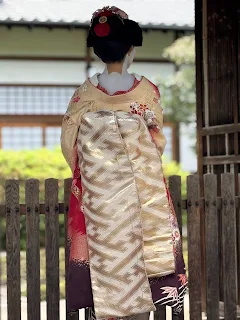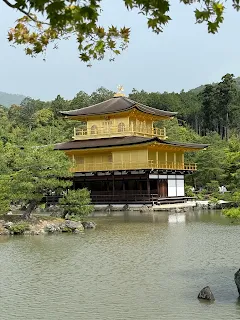I’ve just returned from a two-week whirlwind through Japan—land of sushi, samurai, and the world's most efficient vending machines. From the neon buzz of Tokyo to the serene shrines of Kyoto, and all the 7-Eleven egg sandwiches in between, here’s a day-by-day recap full of tips, mishaps, and magical moments.
Day 1: Tokyo Arrival – Let the Jet Lag Begin
After 14 hours of recycled cabin air and mediocre airplane rice, we touched down at Haneda. Checked into the Hyatt Regency in Shinjuku (great location—walkable to metro stations and very civilized 7-Eleven next door). Pro travel tip: Japan’s 7-Eleven is not your sad American version. We made our first pilgrimage for...egg sandwiches. Yes, they’re that good. Trust me.
Day 2: Mt. Fuji, Hakone, and Onsen Relaxation
 |
| Mt Fuji |
Booked a private driver/guide for a full-day Mt. Fuji tour ($350 well spent). Weather was cooperative (Fuji-san peeked out like a shy celebrity), and the driver took us through scenic villages and photo op stops on the north and east sides.
 |
| Tokyo- Shibuya Crossing |
Back in Shinjuku, we wandered into neon-lit alleys of Omoide Yokocho and stumbled upon an amazing sushi spot thanks to our local friend’s golden rule: Japanese-only listings + 4.5 stars = culinary jackpot.
Day 3: Temples, Tea, Knives & History
Started the day in Asakusa at the iconic Senso-ji Temple, followed by a stroll down Nakamise Street. Touristy? Sure. But worth it for the matcha ice cream and good vibes.
Next up: Kappabashi Street—Tokyo’s kitchen district. Japanese chefs treat knives like sacred tools. We did too. Picked up a few blades from Kama Asa (but I now regret not waiting for Kyoto... more on that later).
Also squeezed in a shrine devoted to cats (Imado-jinja) and skipped Skytree’s observation deck—because the one at the Tokyo Government Building is free and fabulous.

Day 4: Fish, Palaces & Jiro Dreams
 |
| Tokyo - Imperial Palace |
Joined a free walking tour via GuruWalk that snaked through the Imperial Palace area to the bustling (and slightly overwhelming) Tsukiji Outer Market. Tip: it’s pricey, but the tuna is basically sushi royalty.
Then began my sushi pilgrimage: hunting down the legendary Jiro Sushi in Ginza. Did I eat there? No. Did I peer into the holy temple of omakase greatness? Absolutely. Pro tip: Watch Jiro Dreams of Sushi before your trip.
Japan is a land of fascinating dichotomies. On one hand, it's a society steeped in conformity and order—there are virtually no public trash cans, yet not a speck of litter. Public toilets are scarce, yet the streets are immaculate. People exit train stations in silent, choreographed streams, no music blaring, no chaos—just quiet efficiency. And yet, this same country births some of the world’s boldest innovations, from high-speed trains to robot cafes to earthquake-resistant architecture that feels like science fiction. What drives this? Maybe it’s the country’s relationship with nature—the looming presence of tsunamis, typhoons, and earthquakes. In a place where disruption is always possible, efficiency isn’t just a virtue—it’s a survival skill. Innovation, in Japan, feels less like a choice and more like a cultural necessity, beautifully wrapped in humility and precision.
Day 5: Anime Overload in Akihabara
Started the day with a return trip to the Tokyo Government Building for panoramic views (did I mention it’s free?). Then wandered Akihabara—Tokyo’s mecca for anime, manga, and electronics. Unless you’re a true fan, a half-day here is plenty.
 |
| Tokyo - Akhilbara |
Pro tip: Nakano Broadway is a quieter, alternative spot if you're hunting for pre-loved luxury goods and quirky collectibles.
Day 6: Odaiba & TeamsLab... Almost
Spent the day in the futuristic Odaiba district with views of Tokyo Bay and the Rainbow Bridge. Tried to visit TeamLab Planets but—rookie mistake—didn’t book tickets in advance. Learn from me: Book. Ahead.
 |
| Tokyo - NishiShinjuku |
Tokyo is one of the largest and busiest cities in the world—a vertical sprawl of high-rises packed with young professionals, endless train lines, and crosswalks that pulse like rivers of people. Green space? Nearly nonexistent. And yet, the city is spotless. No litter. No trash cans. Just an unspoken commitment to order. And the service—whether at a convenience store or a high-end sushi bar—is consistently warm, precise, and respectful. Step outside the metropolis, though, and a different Japan emerges. Rural communities are quiet and compact. Homes are small, often with little to no garden. All the green you see is purposeful—either cultivated in tiny rice plots or stretching into forested mountains. There’s a calmness to these towns, a slower rhythm that feels like a deep breath after Tokyo’s charge. It’s a striking contrast—and a reminder that Japan’s beauty lies not just in its modern marvels, but in its quiet contradictions.
Day 7: Kamakura – Zen, Buddha & Bamboo
Took the 1 hour trip via JR to Kamakura for a day of temple hopping: the Great Buddha, Hasedera Temple, and the soothing Bamboo Garden. Highly walkable and meditative. Watch out for school groups and street food—you’ll want to try everything.
Day 8: Kyoto Temples, Tea and History
Zoomed to Kyoto via the Nozomi Shinkansen (fastest train, fewer stops, and no JR Pass needed—more on that later). Stayed at the Cross Hotel Kyoto—great location.
Nishiki Market? Total tourist trap. Loved it anyway. Also: Kyoto’s knife shops are on another level. If I had known, I’d have waited to buy mine here. We spent the evening walking the main street of Geisha district and
 |
| Mt Fuji |

under the lights of Yasaka Shrine and Pagoda.
Day 9: Fushimi Inari & Sake Heaven
Beat the crowds to Fushimi Inari Shrine. Pro tip: the best view is halfway up at Yotsutsuji—not the summit. There’s a secret bamboo forest entrance, but I learned about it after the hike. (Next time!)

Day 10: Gold Shrines & Geisha Streets
Visited Kyoto’s famous golden shrine, Kinkaku-ji, then wandered through the storied Nijo Castle. Joined another GuruWalk through Gion at sunset—Geisha sightings included. Ended the night with a pair of Onitsuka Tigers (and another knife, because… Japan).
Day 11: Bamboo Forest & A Samurai That Wasn’t
 |
| Bamboo Forest |
Explored the Arashiyama Bamboo Forest and strolled through town. Rain cut our golden temple visit short, but we still managed a tea ceremony (kimono-free) and a disappointing Samurai experience (husband's verdict: meh).
Day 12: Nara – Big Buddha & Bambi
We wrapped up our day trip to Nara with a visit to Todai-ji Temple to meet the Great Buddha—serene, enormous, and a must-see. Nara Park, meanwhile, was overrun with deer who’ve clearly figured out tourists = snacks. Let’s just say they don’t understand personal space. Or subtlety.
By evening, we hopped on a short train to Osaka and checked into a hotel in the Umeda district. It’s a lively area with plenty of shopping and dining, but not much in terms of major attractions. For atmosphere and energy, Dotonbori is where Osaka truly comes alive.
Now, let’s talk about Japan’s train stations. They’re not stations—they’re subterranean cities. Umeda Station in Osaka is a particularly cruel maze. Multi-level, endless exits, and a full-blown shopping complex thrown in for extra chaos. Twice, we attempted to find highly recommended restaurants. Google showed "Done". Reality said "Good luck." We asked locals. We followed walking directions. We walked in circles for what felt like hours. Never found them. Japan may have perfected punctuality, but train station navigation? That's still a work in progress.
Day 13: Osaka Streetfood and Nightlife
 |
| Osaka Castle |
Explored Osaka Castle, Dotonbori, and Shinsaibashi Arcade. Ate too much, walked it off, and watched Namba nightlife come alive.
Day 14: Hiroshima & Miyajima Island
 |
| Hiroshima |
An emotional visit to Hiroshima’s Peace Memorial Park and the Atomic Bomb Dome left us reflective and quiet. History weighs heavy for generations—and it should. Given the war in Ukraine and in Palestine, this trip felt so heavy. Wars are never the answer.
 |
| Miyajima Island |
Afterward, we took the 45-minute ferry (conveniently departing from right near the park) to Miyajima Island to visit the iconic “floating” torii gate. The tide was out, so it wasn’t technically floating, but still—majestic. Towering, tranquil, unforgettable. And the oysters? Fresh off the grill, melt-in-your-mouth, worth flying back for.
Day 15: Farewell to Japan
Late flight out of Kansai Airport. Bags heavier (knives, shoes, KitKats, Korean skincare, sake-so tempted but did not buy and lots of lots of great memories), heart fuller.
Travel Tips: Rail Passes, Etiquette & Budgeting
-
JR Pass? We skipped it. Unless you plan to ping-pong across Japan, individual tickets may be cheaper and more flexible.
-
Transport: Suica Card on Apple Wallet is life. Subway 1-3 day passes are cheap and useful.
-
Cash: Best rates were at 7-Eleven ATMs.
-
Language barrier? Google Translate is your best friend.
-
Trip MVP? Google Maps for all transit guidance, obviously.
Arigato Japan. You were polite, precise, superbly efficient and painfully beautiful. Sayonara!





